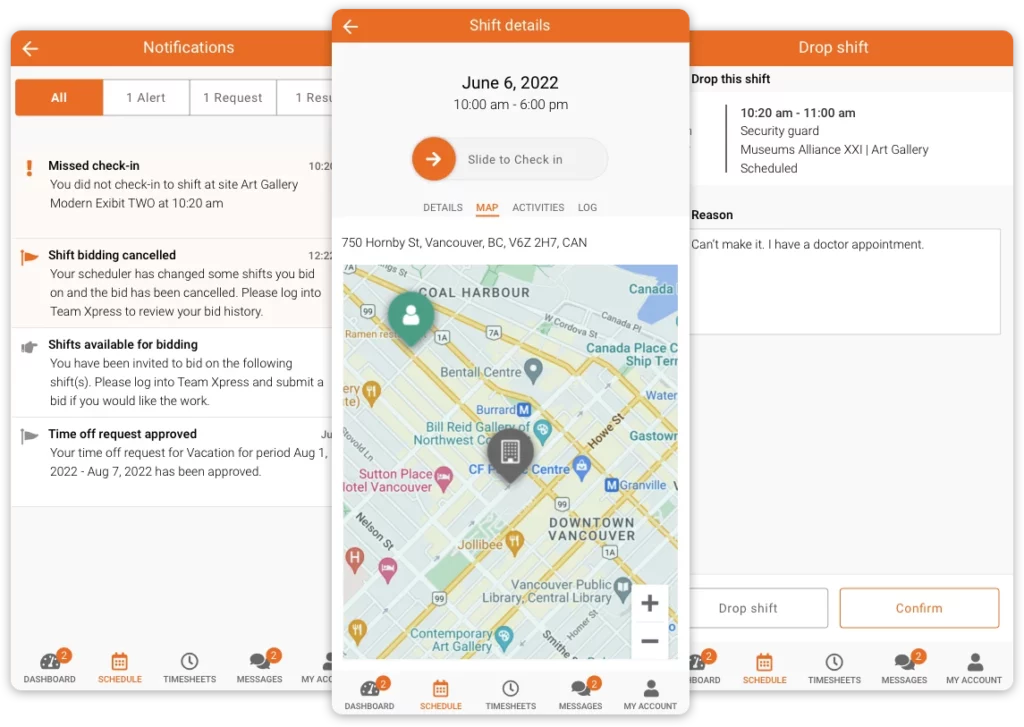If your business employs casual workers, you know that scheduling them can be a challenge. Unlike regular employees, casual worker scheduling may be unpredictable and require working irregular hours and more flexibility. But by using the right tools and strategies, you can streamline the process and ensure your business runs smoothly.
If you’re an employer, it’s essential to understand the difference between casual and part-time work. Both types of employment have benefits and drawbacks, and each requires a different approach to scheduling and managing workers.

What is a casual worker?
According to the Government of Canada’s Treasury Board, a casual worker is “a person appointed to a position for a specified period of time to perform work on an ‘as and when required’ basis with no expectation of continuous employment.” Casual workers are often hired to fill short-term staffing needs or to provide additional support during peak periods.
Celayix’s scheduling software is designed to handle the unique challenges of managing casual workers. Whether you need to schedule a few workers for a single shift or hundreds of workers for multiple locations, Celayix can help. With features like automated scheduling, shift-swapping, and self-scheduling, Celayix can save you time and help ensure your casual workers are scheduled effectively.
- In Canada, approximately 2.6 million workers were classified as casual or temporary employees in 2019.
- Casual workers make up about 15% of the Canadian workforce.
- Casual workers are more likely to be younger, less educated, and female than regular employees.
Examples of Casual Work:
- A restaurant that hires additional servers for special events or busy weekends.
- A retailer that employs temporary staff to cover the holiday season.
- A construction company that hires extra labourers for a short-term project.
Factors Affecting Casual Worker Scheduling
Numerous factors can influence a casual employee’s minimal hours of labour. Industry awards frequently define the minimum number of hours and salary that a casual employee is entitled to. Many businesses have casual employment opportunities with different working hours.
Employer demand:
The employer’s demand for casual workers greatly affects their scheduling. Employers may schedule workers based on their fluctuating demand for goods or services, such as during peak periods, seasonal changes, or sudden business growth.
Worker availability:
Casual workers may have other commitments, such as school or another job, which can limit their availability. Employers may schedule them around their availability or prefer to hire workers who are more available.
Skills and experience:
The skills and experience of casual workers may also affect their scheduling. Employers may prefer to schedule workers who are more skilled or experienced during busy periods or for more demanding tasks.
Employee preferences:
Employers may also consider the preferences of their casual workers when scheduling shifts, such as their preferred work hours or days off.
Labour laws and regulations:
Employers must comply with labour laws and regulations when scheduling their casual workers. This may include ensuring that workers are not overworked, given sufficient breaks, and compensated fairly for their time.
Cost and budget considerations:
The cost of labour is also a key factor in casual worker scheduling. Employers may schedule workers based on their budget, including factors such as overtime pay and labour costs.

Shift coverage:
Employers may need to schedule casual workers to ensure sufficient shift coverage, such as having enough workers on weekends or during peak periods.
Workplace culture:
Workplace culture may also affect casual worker scheduling, such as the importance placed on work-life balance or flexibility in scheduling. Employers who prioritize these values may be more likely to offer flexible scheduling options for their casual workers.
What is Part-Time Work?
Part-time work refers to employment that involves working fewer hours than a full-time job. They are typically scheduled to perform a set number of hours each week, but their schedules may vary depending on the employer’s needs. Part-time workers are entitled to certain benefits, such as vacation pay and sick leave, but these benefits may be prorated based on the number of hours worked.
Statistics on Part-Time Work:
- In Canada, approximately 3.3 million workers were classified as part-time employees in 2019.
- Part-time workers make up about 19% of the Canadian workforce.
- Part-time workers are more likely to be female than male and more likely to be over 55.
Examples of Part-Time Work:
- A retail worker who works 20 hours per week.
- A teacher who works part-time during the school year.
- A nurse who works part-time shifts at a hospital.
What’s the Difference?
The main difference between casual and part-time work is the nature of the employment. Casual work is short-term and irregular, with no expectation of ongoing employment. Part-time work is more long-term and predictable, with a set number of weekly hours. Casual workers are not entitled to the same benefits as part-time workers, but they may have more flexibility in their schedules.
For employers, it’s essential to understand the differences between casual and part-time work and to choose the right type of employment for your needs. Casual work may be the right choice if you have short-term staffing needs or need additional support during peak periods. If you need workers on an ongoing basis but don’t require full-time hours, part-time work may be a better option.
Whether you’re managing casual or part-time workers, having the right tools and strategies is essential to ensure effective scheduling and management. Scheduling software like Celayix can help you streamline the process and ensure your workers are scheduled effectively and efficiently.
Tips for effective casual worker scheduling:
Use scheduling software:
Scheduling software like Celayix can help you manage your casual workers more efficiently. With Celayix, you can easily create schedules, assign shifts, and communicate with your workers. You can also track their attendance, manage time off requests, and generate reports.

According to a survey by Shiftboard, scheduling software can reduce the time spent on scheduling by up to 80%. Moreover, it allows managers to easily track employee availability, assign shifts, and communicate changes to the team.
Plan ahead:
Try to schedule your casual workers in advance. This will give them time to plan their schedules and reduce the likelihood of last-minute scheduling conflicts. Use Celayix’s forecasting and scheduling tools to prepare and ensure that you have enough workers scheduled for each shift.
A Society for Human Resource Management study found that flexible scheduling is one of the most desired employee benefits and can improve employee retention and job satisfaction. This can include split shifts, part-time hours, and remote work.
Be flexible:
Casual workers may have other commitments, such as school or family obligations, affecting their availability. Be willing to work with them to accommodate their schedules whenever possible. Celayix’s shift-swapping and self-scheduling features make it easy for workers to request changes and for managers to approve them.

According to the Fair Work Ombudsman, employers should provide casual workers at least one hour’s notice of their shifts. However, providing workers more advance notice of their schedules can improve employee satisfaction and reduce absenteeism.
Communicate clearly:
Ensure your casual workers understand their schedules and what is expected of them. Use Celayix’s messaging and notification features to communicate important information, such as schedule changes or upcoming events.
A survey by WorkJam found that 74% of employees would be more likely to stay with a company if they had more control over their schedules. This can include allowing employees to swap shifts with coworkers, offering preferred shift options, and accommodating personal commitments.
Keep records:
Keep detailed records of your casual workers’ schedules, attendance, and performance. Use Celayix’s reporting tools to generate custom reports and analyze your scheduling data. This will help you identify trends, optimize your scheduling processes, and make informed decisions about your workforce.
Effective scheduling involves finding the right balance between workload and labour costs. This can include tracking labour costs, analyzing labour trends, and optimizing schedules based on demand.
By following these tips and using scheduling software like Celayix, you can effectively manage your casual worker scheduling and ensure your business runs smoothly.





